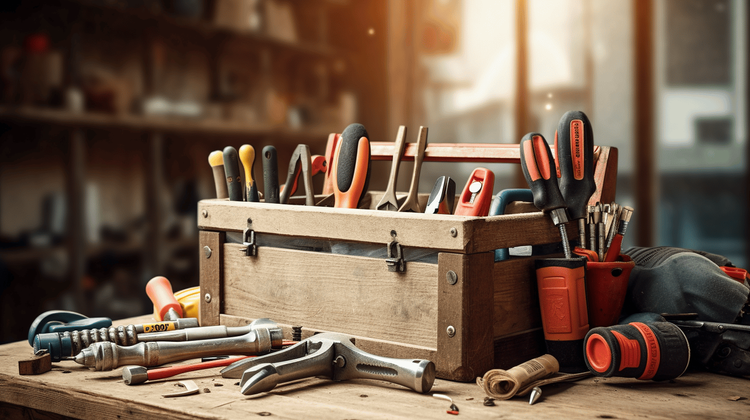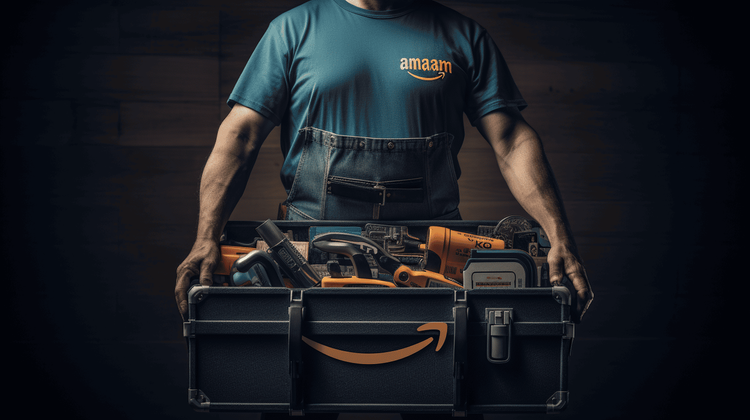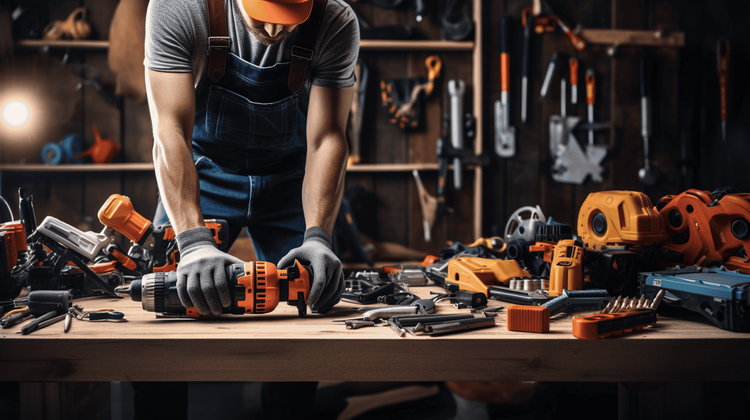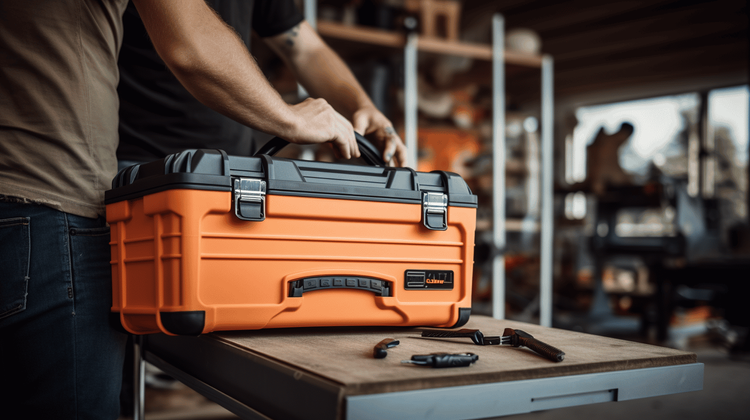Bargain Hunting for DIY Tools: Top Tips and Tricks
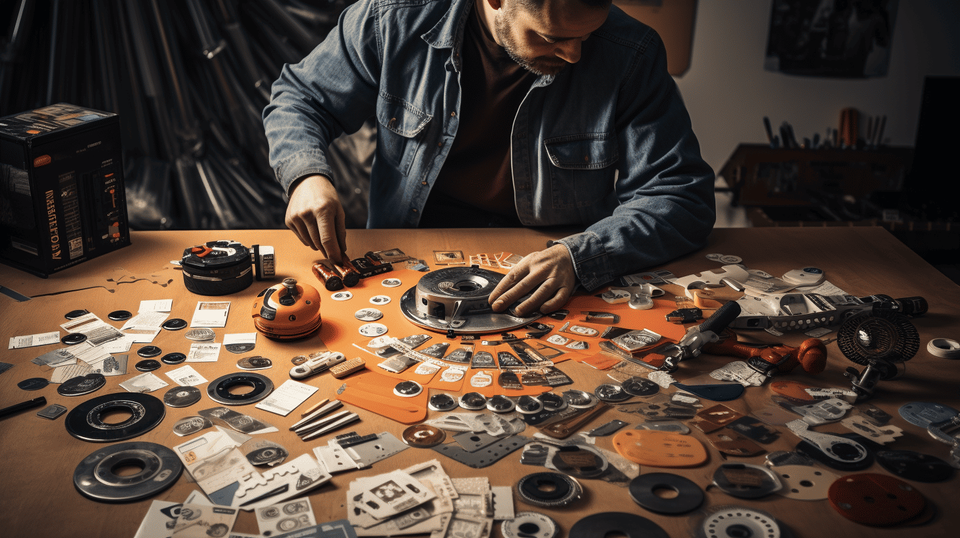
Welcome, DIY enthusiasts! 🛠️ If you're eager to start your next home project or keen to build your tool collection, you've come to the right place—especially if you cringe at the thought of plate-thin wallets at the end of it.
Who says you have to splurge to find quality DIY tools? Bargain hunting for these handy items can indeed be quite the adventure—and we're here to guide you through it. From understanding the ins and outs of the ever-changing DIY tools market, to nailing down the optimum strategies for finding the best deals—you'll learn it all. We'll even delve deeper on how to maintain quality while keeping an eye out for bargains, ensuring you always get the best bang for your buck.
Don't forget safety precautions—it is crucial to ensure your intended discounted tools are in good condition and not counterfeits. While saving money is important, your safety should never be compromised.
Maximizing cost efficiency with DIY tools is not just about identifying bargains but also knowing how to look after your tools and choosing versatile ones that can serve multiple purposes.
Ready to embark on this savvy shopping journey with us? Get your notepads out, your browser tabs open, and let's dive in!
Understanding the DIY Tools Market
The rise of the digital era combined with the desire for personalization has led to a massive boom in the DIY (Do-It-Yourself) tools market. With an increasing number of people finding joy in creating something from scratch or fixing things around their homes, the need for versatile, efficient, and affordable tools is more prominent than ever. Hence, it's important to understand this vast market, which is highly influenced by individual preferences, skill sets, and budgets. In this section, we will explore the variety of DIY tools and their price ranges.✨
Different Types of DIY Tools
Starting a DIY project is exciting, isn't it? 🎨 But picking the right tool can be a daunting task, considering the myriad options available at your disposal. The wide DIY tools universe consists of various equipment ranging from simple hand tools to more complex power tools.
- Hand Tools: These are the most basic yet essential tools for any DIY enthusiast. Screwdrivers🔩, hammers 🔨, pliers, tape measures 📏, and saws are a few examples. They are good for tasks that require precision and control.
- Power Tools: Offering more power and speed, these tools are perfect for heavy-duty tasks. Look at power drills 🔌, circular saws, and sanders which are popular favorites.
- Gardening Tools: For the green thumbs out there! Rakes, shears, hosepipes, and lawn mowers come under this category. 🍃
- Specialty Tools: For more niche projects, like creating pottery or embroidery, tools such as pottery wheels or embroidery hoops would come under this category. 🪡
Knowing your project requirements and the tools that can best achieve them will put you on the right track. But remember creativity cannot be bought, only tools can be! 😉
Price Range of DIY Tools
Just as the variety, the cost of DIY tools range widely depending on functionality, complexity, brand, and more. Let's break it down:
- Hand Tools: Typically, these are more budget-friendly, with prices starting as low as $5. More specialized hand tools can go up to $100.
- Power Tools: These are significantly more costly due to their features and durability. Expect prices to range anywhere between $100 to $1000.
- Gardening Tools: From around $20 for basic tools, prices can reach up to $400 for larger equipment like lawn mowers.
- Specialty Tools: The range varies vastly here as it depends on the type of hobby. Cross-stitching starter kits, for example, could start at $10 while a high-end pottery wheel could cost $1000+.
Understanding the DIY tools market is essential not just for the consumers who are in it for the thrill of creation, but also for marketers and businesses looking to capitalize on this growing trend. As each tool finds its user, it’s clear that the beauty of DIY lies not just in the process, but also in the tools that enable it. 🛠️✨
Bargain Hunting Strategies
Who doesn't love getting more for less? Most people do – that's for certain. Bargain hunting can turn an overwhelming shopping spree into a victorious adventure. You just have to know where to look and when. So, for all you thrill-seekers out there, let's dive deep into proven strategies to find the best deals around.
Seasonal Sales and Discounts
The first golden nugget to keep in mind is the power of seasonal sales and discounts.
- Black Friday, Cyber Monday, and Boxing Day are all stellar examples of times when retailers slash prices significantly.
- You've also got end-of-season sales to look forward to. Here, brands are eager to clear out older stock to make room for new inventory.
In other words, if you can wait for these sales seasons, your patience will most likely pay off 😎.
Online Shopping Platforms
In the era of the internet, can we forget about online shopping platforms? Definitely not!
Online shopping is like a 24/7 bargain hunting ground - from auction sites to major marketplaces, there's always a deal waiting to be nabbed. Many online platforms offer exclusive discounts and flash sales. So, go ahead, turn on those notifications, and let your favorite deals come straight to you. They often have special offers like "buy one get one free" or "free delivery for orders over $50", those are what a bargain hunter lives for! 🙌🏼
Local Stores and Flea Markets
Yet, let's not underestimate the charm of local stores and flea markets. There's beauty in rummaging through a shelf or stall and finding a treasure.
- In flea markets, you can find unusual items at throwaway prices. These can range from vintage jewelry, old records, to occasionally even designer clothes.
- Local stores, on the other hand, often host clearance sales. This is especially true if the store needs to close down or move. So, keep an eye out for 'everything must go' signs.
They might often seem chaotic, but sometimes chaos is where the best deals hide. 😉
Bulk Purchasing
Lastly, there's no bargaining strategy list complete without mentioning bulk purchasing. Buying in bulk is a proven way to save money.
- Think everyday essentials, non-perishable food items, or cleaning supplies. The savings you make over time from bulk buying these items can sometimes be astounding.
- And yes, many stores grant even steeper discounts for bulk purchases during sales.
So, next time you stumble upon a deal for a bulk purchase that suits your needs, don't shy away!
Unleashing your inner bargain hunter doesn't have to be complicated, it just needs a bit of patience, persistence, and strategy. Happy shopping! 🛍️
Maintaining Quality while Bargain Hunting
Who said you couldn't mix quality and affordability when it comes to your toolkit? 🧰 Sure, the market is flooded with seemingly countless options, but one can certainly strike a balance between budget-friendly and high-quality tools with a little know-how. Whether you're a seasonal DIY enthusiast, a budding hobbyist, or a professional, this section will guide you in maintaining quality while hunting for the best tool bargains. 🛠
Understanding Tool Specifications
Contrary to what some may believe, pricier doesn't always mean better when it comes to tools. Often, you'll find that certain tools, while more costly, may not come loaded with the specifications and features you truly need. Smarter spending begins with understanding your tool requirements in line with your projects. Here are a few points to consider:
- Power: Cordless power tools may seem appealing due to their portability, but this convenience often comes at the expense of performance. Balancing power requirements with battery life can be your first step in smart bargain hunting. 🔋
- Brand Reputation: While it's not always a guarantee of quality, a brand's reputation can paint a picture of expectations. Brands like Stanley and DeWalt, for example, have built strong reputations on quality and durability. 🔨
- Features: The right set of features can make all the difference, especially in complex projects. A drill with a built-in level, for instance, can take your precision game to whole new levels.
Checking for Durability
There's no greater regret than investing in a tool that breaks down after a few uses, right? 💔 But worry not. Evaluating a tool's durability is a fairly predictable process. Here are useful tips to get you started:
- Check the Packaging: Quality tools often come in protective cases or boxes. This not only speaks to the brand's commitment to the tool's lifespan, but also provides the first line of defense against wear and tear.
- Look for Warranties: Warranties are a manufacturer’s guarantee that they believe in their product. Opting for tools with warranties can give you peace of mind, knowing that you're covered in case of defective products. 🔒
- Material Quality: The type of material used in manufacturing the tool can tell you a lot about its potential longevity. High-grade steel or aluminum tools generally last longer, compared to cheaper materials.
Prioritizing Essential Tools
It's easy to get carried away in a store with a plethora of shiny tools, but remember, not all tools are created equal. Learning to prioritize essential tools isn't just budget-savvy, it's a more efficient approach to tool shopping.
- The Essentials: A set of screwdrivers, a quality hammer, a reliable drill, and a set of pliers. These are just a few essentials that should form the foundation of any toolkit. 🔒
- Versatility vs. Specificity: Some tools can serve multiple purposes, while others are more specialized. A good example is a Swiss Army knife. It's more versatile compared to a specialized tool like a wire stripper.
- Quality over Quantity: It's always a better idea to invest in one high-quality tool rather than multiple low-quality alternatives. Remember, your tools are only as good as their weakest link.
After all, tools are an investment 🏦, and with these strategies in mind, we're confident you'll be able to maintain quality while scoring the best deals out there. So go out there and nail that bargain hunt! 🔨
Safety Precautions when Buying Bargain DIY Tools
Whether you're a seasoned DIY buff or a weekend warrior, there's nothing quite as satisfying as adding a piece of equipment to your tool chest, especially if it's a bargain. But before you start hunting for the best deals, it's crucial to understand the safety precautions when buying bargain DIY tools. With safety as our core focus, let's embark on this educational journey on how to equip your toolbox with high-quality, cost-effective, and safe tools.
Ensuring Good Condition
Quality should never be compromised, even when we're talking about bargain tools. To ascertain that you're getting a good deal without compromising your safety:
- Inspect the item thoroughly before purchase. Does it appear to be well-made? Are there any signs of damage or misuse?
- Consider the tool's age. While older models might come at a cheaper price, they might not be up to current safety standards.
- Check for a warranty. A warranty not only provides a safety net should your tool break down unexpectedly but also shows the manufacturer's confidence in the product's quality and functionality.
- Power tools should come with inbuilt safety features like blade guards and dead-man switches. Make sure they're in place and working.
Avoiding Counterfeit Tools
Bargain offers may sometimes be a façade for counterfeit products. Fake tools might look like the real deal but often fall short on quality, durability, and pose extreme risks to safety. Avoid these risks by:
- Buying from reputable sellers. Trusted sellers often procure their stock from reliable sources, ensuring the tools' authenticity.
- Comparing prices of the same tool model across different sellers could alert you to unusually cheap prices.
- Knowing your brands. Renowned brands usually mark their products with unique identifiers or characteristics.
- Being wary of deals that seem too good to be true - because they usually are! 😊
Always remember, achieving the best value is not just about getting the cheapest tools but acquiring top-notch quality and utmost safety. As the adage goes, "Buy cheap, buy twice." Buy with safety in mind, and you'll have a reliable, well-equipped toolbox that stands the test of time. With these safety precautions, you're all set to buy your bargain DIY tools the safe way! 🛠️👷♂️
Maximizing Cost Efficiency with DIY Tools
Maximizing cost efficiency and the best DIY experience entails more than just buying top-shelf equipment. Sure, it wouldn't harm to have the best, but let’s face it, getting the most for your money can sometimes elude even the most frugal among us. And that's what today's discussion is all about: achieving the utmost cost efficiency with DIY tools. So, put your hard hats 🔨 on as we delve into the nitty-gritty of making the most out of your DIY toolkit.
Taking Good Care of Your Tools
Good care of your DIY tools means they'll serve you better and last longer. And hey, we both know what that translates to—efficient use of resources and saving on the need to keep re-investing in the same range of tools. These three simple but essential practices can help prolong the life of your tools:
- Store them properly: Tools that sit out collecting dust and rust will degenerate quickly. Store them safely, in dry conditions. Using a toolbox or shelf can keep your tools organized and protected from adverse conditions.
- Keep them clean: Dirt, sawdust, oil, or grease can affect the performance of your tools over time. Regular cleaning preserves their usability and prolongs lifespan.
- Routine Maintenance: Don't just wait for your tools to break down before fixing them. A keen DIY enthusiast should always ensure all tools are in top-notch performance. Regular oiling, replacing worn-out parts, and routine check-ups are necessary activities to keep your tools functioning optimally.
Choosing Versatile and Multipurpose Tools
Sometimes, less is more. This timeless concept is especially true in managing your DIY tools. Why clutter your workspace with single-use tools when you can opt for versatile, multipurpose tools? Here are a few reasons why multipurpose tools offer more value:
- Cost Savings: Versatile tools that can perform multiple tasks can reduce the need for purchasing a range of single-use tools, leading to considerable cost savings over time.
- Space Efficiency: Using multipurpose tools allows you to save valuable workspace. Plus, it’s easier and more convenient to manage a reduced set of tools.
- Time Efficiency: Fewer tools mean less time spent rummaging through your toolkit trying to find the right tool for the job.
Remember, efficiency isn't just about having the best tools; it's about making the best use of those you've got. Caring for your tools and carefully selecting versatile ones can not only improve your DIY experience but also save you bucks in the long run. And who wouldn't love to have some extra dollars in their pocket? So, go ahead, take good care of your tools, opt for versatility, and enjoy the maximum cost efficiency with your DIY tools! 👍💰🛠️
Conclusion
Scouting out the best deals for your DIY tool collection can be a thrilling adventure. It's like going on a treasure hunt, with an array of high-quality tools as your ultimate prize. With a bit of creativity and dedication, it's entirely possible to fill your toolbox with excellent tools without emptying your wallet.
Familiarizing yourself with the various types of tools, their quality indicators, and average price ranges is an essential prerequisite. A thoughtful browsing strategy—exploring both online platforms and local stores—can save you a substantial amount and might even land you some surprisingly good finds. Bulk purchases are also a savvy strategy to consider for bigger savings.
However, bear in mind the essential aspect of quality. It's no bargain if your purchased tool breaks down after a few uses, regardless of its price. Make durability, as well as functionality, your prime criteria when evaluating a potential purchase. Don't forget that safety should never come as an afterthought; investing in tools in good condition and from trustworthy brands will ensure your home projects can be carried out securely.
Consider visiting Ultra Handy, a great destination for DIY enthusiasts and professionals who value quality and convenience. Their best seller, the Bit Holder Keychain, is a practical and compact accessory for organizing screwdriver bits. Ultra Handy's selections make your bargain hunting easier while making sure your tool collection remains top-notch.
Remember, excellent tool maintenance and selecting versatile tools will aid in maximizing cost-efficiency over time. You'll want tools that can stand the test of time and prove their worth with every DIY project you undertake.
Happy bargain hunting! 💼🔨💡🗝️
Frequently Asked Questions
- What are some tips for finding the best bargains on DIY tools?Some tips for finding the best bargains on DIY tools include: 1. Research prices and compare across different stores or online platforms, 2. Look for sales and discounts, especially during festive seasons or special events, 3. Consider purchasing used tools or checking out yard sales and thrift stores, 4. Sign up for newsletters or follow social media accounts of tool retailers to stay updated on promotions, and 5. Join online forums or communities where users share information about deals and discounts on tools.
- Are there any specific times of the year when DIY tools are usually on sale?Yes, there are certain times of the year when DIY tools are often on sale. These include Black Friday, Cyber Monday, and other major shopping holidays. Additionally, many stores offer discounts during seasonal clearance sales or when new tool models are being released. It's a good idea to keep an eye out for these times to score great deals on DIY tools.
- Is it worth buying used DIY tools?Buying used DIY tools can be a great way to save money, especially if you're on a tight budget. However, it's important to carefully inspect the tools before purchasing and make sure they are in good working condition. Check for any signs of damage, test the functionality, and ask the seller about the tool's history. Additionally, buying from reputable sellers or online platforms with buyer protection can provide extra peace of mind.
- How can I find reliable reviews of DIY tools?To find reliable reviews of DIY tools, you can follow these steps: 1. Check online platforms and websites specializing in tool reviews, 2. Look for user reviews on e-commerce websites like Amazon or Home Depot, 3. Join DIY or tool-related forums and ask for recommendations and reviews from fellow enthusiasts, and 4. Consider watching video reviews on platforms like YouTube, where you can see the tools in action and hear the reviewer's opinions.
- Are there any apps or websites that can help me track deals on DIY tools?Yes, there are several apps and websites that can help you track deals on DIY tools. Some popular options include Honey, CamelCamelCamel, Slickdeals, and DealNews. These platforms often provide price histories, track current deals, and can send you notifications when the price of a specific tool drops. It's worth exploring these resources to get the best bargains on DIY tools.
